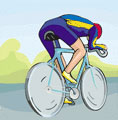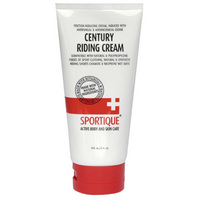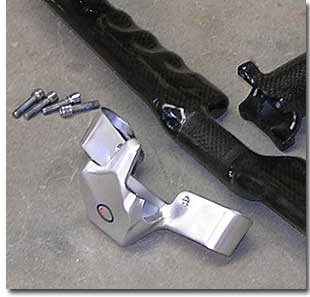Positional problems

Are you uncomfortable on your bike? If so, it could be that your position is correct, you’re simply on the wrong saddle. Or you’re laying your arms on the wrong set of aerobar armrests. Or your aerobar extensions are the wrong shape. These are “point tenderness problems” and I wrote about them recently. But what if these aren’t the problems? Then the issue is positional.
Let’s recall point tenderness just for moment. These problems come in two forms: pressure and friction. Pressure problems are solved by displacing your weight over a greater surface area. If you assume the pushup position, your arms and back will eventually tire, but your hands will remain fairly comfortable, because you’re displacing your weight across the palm and your fingers, and there’s a lot of soft tissue there to protect you. But if you rest your weight only on the points of your elbows, that’s going to hurt. Why? Because there is not a lot of meat between your elbow and the ground, and all that weight is displaced only on the tip of your elbow. What if you displaced the weight on your forearms? You’ve still got a “padding” problem; there’s not a lot of padded flesh on your forearms. But, you’re displacing your weight across a greater surface area, relieving the pressure on any single point.
You can see how point tenderness problems can occur. But the problem might not be pressure, rather it might be friction. In this case, your action item is to reduce the friction, and chamois cream comes to the rescue.
Okay, these are point tenderness problems. These problems can be solved if your fit coordinates are correct, that is, if the saddle is the right height and is correctly positioned for/aft; and if the armrests are the right distance in front of the saddle and are the right amount of distance below the top of the saddle. In other words, I can solve your point tenderness problem, but if I’m focusing on this I’m assuming your position is correct. But for many of you, that’s an assumption you may not want to make.
How do you know if your position is correct? This is not a straightforward answer. But I think I can move you further down that road toward finding out, by taking you along a line of reasoning you might find helpful.
Your first question is simply this: do you want to ride the entire bike leg in the aero position? Me, I do. I find it comfortable, powerful, and fast. But you can be comfortable, powerful, and a bit less fast if you don’t ride primarily in the aero position, and a lot of people prefer this. If this sounds like you, then you’re really best off on a road race bike, set up like a road race bike, with road bars, and standard road shifters and brake levers. For these riders, there is a sort of aero bar we call a “shorty bar” and you’ll see these used in ITU (draft legal) triathlons. Unfortunately, no company has made a really first rate shorty bar, so we’re left to putz around for the best thing we can rig up. I’ve done some experimenting, and I occasionally write about those experiments here on Slowtwitch.
But let’s say you want to ride in the aerobars the whole way. How do you know whether your position, that is to say your “fit coordinates,” are correct?
In very general terms, when it comes to tri bike fitting there are two approaches in broad use. First, let’s talk about the approach I tend not to favor. When I first started riding with aero bars, the year they came out, what I’ll describe below is how I rode them. Back then, more than two decades ago, riding forward, with a steep seat angle, was nothing anybody had considered. We all just slapped the aerobars on our bikes and off we rode. Yes, there were comfort issues, but the bars were fast and fit coordinates and contact points were terms of art to be developed well into the future.
At that time, what seemed clear was that yanking our road bars out of our bikes, replacing them with tri bars routed in the same ste, resulted in two problems. First, our hip angles were too closed; our knees were almost hitting our chests. We gained aerodynamics, but we lost leverage. The second problem is that we were way too stretched out. The armrests were well too far forward of where they ought to have been. This was especially the case back in the beginning, because the original Scott bars, and the original Profile Design bars that arrived shortly thereafter, placed the armrest directly over the part of the bar jutting out perpendicular to the stem clamp.
The solution that seemed most intuitive to us back then was to raise the whole aerobar system, and this many of us did, so that the top of the armrest was in height equal to, or only slightly lower than, the height of the saddle. In fact, we often resorted to mountain bike stems for use on our tri bikes, because MTB stems in the old days shot at a steep upward angle, both shortening the stem’s forward protrusion while granting us the height we needed.
Today, there are quite a few fitters that employ that same idea when fitting their customers to their bikes. If, and only if, you want to put a full tri set up on a road geometry bike, that set up works okay. For the person who wants to ride the bike in the aero position, and does not want to concern himself with the fine points of aerodynamics, there is a functional position that can be gotten.
We use the word “optimized” around here a lot in the context of bike fit, and what I describe above is what I might say is legal (in that it follows the laws of ergonomics), or rational, or sensible, but falls short of optimal.
For a full explanation of what I think is the optimal way to ride an aero bar, we do have a section on Slowtwitch devoted to tri bike fit. To ride a bike in an optimized tri position, you want to start with a bike that is built to handle well once this position is achieved. The gold standard is Cervelo. Had I written this three years ago, the folks at Felt would not have been happy. Today, Felt’s people don’t mind hearing this, because Felt bikes are now geometrically built to that same gold standard. Many other companies have moved toward this way of building bikes, to the point where most companies today build their tri bikes to fit within a geometric margin of error. Felt, QR (Kilo and Tequilo), Cervelo, Kestrel (Airfoil Pro) all build tri bikes that are long and low in front. Scott and Cannondale build bikes that are a bit shorter and a bit taller in front. Other companies fall in between, with some companies (QR and Kuota) building some models that tend toward the Cervelo’s geometric schema, and others that are closer to the Cannondale Slice.
Being fitted aboard one of today’s tri bikes means this: Instead of simply lowering the front of your bike to get more aerodynamic, you can now “rotate” your body forward, without losing the leverage you have while you pedal, and get yourself more aerodynamic while remaining powerful. These tri bikes today facilitate this position for you, while putting the wheels in the right place underneath you, so that your weight is displaced well front to rear.
What I have written in the very few paragraphs just above is easy to understand. But, it’s like writing any other intuitive statement. If I were to stand up in church, or in a school auditorium, and say, “Children, obey your elders,” that would sound eminently rational on its face. Yet, consider the ways ethic might be disobeyed, perverted, misconstrued or used as a lever for ill by abusive parents and authority figures.
Likewise, the ways a fitter, or a bike company, or an end-user, can short circuit a straightforward pathway to fit optimization are legion. That’s why I can’t hardly blame a bike shop fitter who just says, quietly to himself, screw it, and fits his customers in the old fashioned but bulletproof method described earlier.
Nevertheless, if you are aware of the roadblocks that stand between you and an optimized fit, you can sidestep these hazards and find a better way.
The series of articles on Slowtwitch that take you through the step by step process of an optimized tri bike fit talks about rotating your entire body position forward, allowing your hip extenders to generate power as you push down on the pedal. But, how far forward? Our articles don’t really spell this out, and for good reason. This is the one area where we let you make that decision for yourself. The further forward you go, the more weight is on your elbows, the more you’ll have to flex your neck to look down the road, and most importantly, the more you’re rotating your pelvis and displacing your weight on a part of your trunk not designed for weight. On my bike, if you run a straight line from the bottom bracket to the center of my tri bike saddle’s rails, this line inclines at 79 degrees. This is my seat angle.
But, I hearken back to the article I wrote a couple of weeks ago on point tenderness. I can ride this position for 25 miles, 40 miles, 60 miles, in the aero position without ever getting out. I’ll run out of fitness before I run out of comfort. But, were I to ride a different saddle; a different aerobar armrest; a different aerobar extension; were I to ride without chamois cream reducing the friction between “me” and “me”; were I to ride with cycling shorts that were not comfortable; then forget it.
Also, this position is not really workable simply on the basis of seat angle. The distance between your saddle nose and your armrest must be correct, and the elevation between those two points must be correct. In point of fact, if you were to change the spatial relationship between all these elements, I’d rather you lower the armrests. This is going to affect me the least. Otherwise, I’d rather you raise the armrest. Only as a last resort would I agree to ride a bike with a longer stem. This is the most uncomfortable change you can make to a rider’s bike. And this is why it’s so maddening to see fitters blithely, ignorantly, raising the aerobars when a customer complains of discomfort, because the single most important element in tri bike comfort is cockpit distance.
Where does all this leave us? Where does it leave you, if comfort on the bike is what you lack? What are your action points?
First, let’s talk about sort of position you should be riding. What I’ve described above are three ways to ride a bike. The first way is to ride a road bike, road geometry, road fit, just like you’re riding as if you were in a bike race and you had no aero bars. You can put a shorty bar on there, or you can omit doing that. Either way, this is a good position. There’s nothing wrong with this position, and in fact I ride a road bike in a road position more often, over more miles, than I do my tri bike throughout the course of a year.
The second position is the “safe” but “conservative” tri position, characterized by a shallow seat angle, aerobars close in height to the saddle. Ironically, even though it’s got tri bars, a road race bike is probably a better bike for this sort of position than a tri bike, because the road bike has the seat angle you’re looking for, and the taller head tube will help. Failing that, those tri bikes that are geometrically “short and tall” versus “long and low” will be more adaptive to this position.
But if you’re going to try to milk the most out of your body and today’s technology, then you have to get your credit card out, because you’ll probably have to make a few changes. The optimized tri bike position is a bit like traveling down Robert Frost’s “road less traveled by” and living on Somerset Maugham’s “razor’s edge.” The optimized tri position is a fast, comfortable, powerful position, but there’s less margin for error; specifically less wiggle room on the contact points. Were you to ride the safe, conservative aero position, you’d be rotated back, sitting more on your sit bones and less on your perineum, with more weight on your saddle and less on your aerobar armrests. For this reason, it matters less what aerobars you use when you’re rotated aft. But when you’re forward and low, your saddle, your cycling shorts, your armrests, must be correct for you. Just like finding the right running shoe, a few of your equipment purchases might go for naught during your search for the perfect places on the bike to rest your body parts.
This is not to say that you can will your way toward faster bike splits through riding an optimized tri position. There are a lot of triathletes who’ll ride slower in that position. Why? Yes it’s true that, as a general rule, forward and low is the optimized way to ride aero bars. But what if that sort of position is not optimized for your morphology, or our current level of athleticism, or your racing goals? Look at it this way. Ferrari Testarossas are optimized for speed. That sort of car, with the right sort of driver, is hard to beat on a curvy mountain road. But is it the best way to get from Culver City to downtown Los Angeles on the Santa Monica freeway every weekday morning? For the more pedestrian among us, and for those with pedestrian goals when they enter and race their triathlons, what is the right bike, and the right position?

Let us say that the daily commuter, not the café racer, describes you, that is, you’re the one who’d be better off in the cycling version of the Cadillac Coupe de Ville, not the Ferrari Testarossa. Speed is not your strong suit, and you just don’t see yourself riding on the saddle’s nose, at 78 degrees of seat angle, with the flat back, and all that. What I have not answered for you is this: What’s your best bet, riding on a road race bike with a set of shorty clip-ons? Or riding on that same slack-angled bike with a full set of aerobars, jacked up in height so that it’s close in elevation with the top of the saddle? Unequivocally, I would like to say it’s the road race bike with the shorty bars: the ITU set-up. I say this because road race bikes are hard to beat. They’ve been around for a century and more, and all the elements of this bike made by the various frame, handlebar, component companies are designed to work with each other seamlessly.
The one truism that causes me to equivocate is that nobody has made a shorty bar that I like or, more precisely, nobody has made a road bar and a shorty bar that, together, function as they should. Some companies have made very important sub-assemblies, most notably Oval Concepts, with its stem and faceplate that doubles as an extension clamp.
Were I forced to choose a bike other than my tri bike for use in racing triathlons, it would be a standard road bike, with a shorty bar no doubt made from several such bars, sub-assemblies robbed from each. Personal choice. This I would choose over a tri bike with a road seat angle and a full aero bar set up hoisted saddle high.
The take-away I’d like to impart to my readers is that uncompromised comfort is available to the high-performance rider choosing the high performance position. But it’s not something you can simply purchase. It’s gained through a process of patient discovery. The skills you need are not limited to what you exhibit on the race course. Let me give you one example. On your next ride, ask yourself a question: What is the least comfortable part of my body during this ride? Is it where you contact your saddle? Is it your feet? This is a point tenderness problem. Or, is it your shoulders, or your low back? Then it’s a position problem. This discernment is a talent even most pros don’t have in any great measure.
Let me put it in different terms. As a businessman, when I start a company I apply a rigor over the first several years that has stood me in good stead. Most businesses typically have a series of modules that constitute a revenue stream. Every year I look at each of those revenue streams and calculate their worth, based on various metrics: return on invested cash; return on invested time; total revenue; if you’re a retailer, one metric might be return on invested floor space. After every such analysis, I kick out the business module that’s not measuring up, and replace it with a promising idea. After several years of kicking out the underperforming module and replacing it with a newer and better one, you’ll have a pretty good business. I treat my race bike like that. What is the worst, most uncomfortable, least functional, thing on this bike? I replace that. Then, I ask what’s now the worst, least functional thing on this bike? After awhile, you have a very comfortable, very functional, bike.






Start the discussion at forum.slowtwitch.com